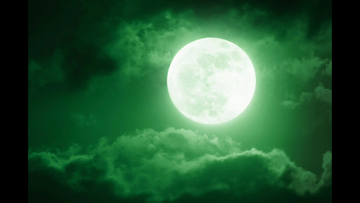
The diamond is a timeless symbol that has been taking people’s breath away since ancient times. It is estimated that since the 15th century BC, diamonds have been revered as a symbol of wealth, luxury and power. Beyond its beauty, the diamond has often been shrouded in mystery, leading many to ask the question: Is a diamond a stone?
Well, the answer is a resounding yes! A diamond is indeed a stone and is the hardest of them all. It is composed mainly of carbon and was created in the depths of Earth’s mantle billions of years ago. This makes diamonds one of the most precious and sought-after stones in the world, with a multifaceted history that continues to fascinate its admirers.
Are stones and diamonds the same?
When it comes to the age-old question of, “Is a diamond a stone?”, the answer is a bit more complicated than a simple yes or no. While diamonds are technically classified by geologists as stones, they have unique characteristics that separate them from other stones.
First, diamonds are incredibly hard. They are the hardest natural substance on the planet, ranking at 10 on the Mohs scale. This is because of their unique atomic structure, which contains strong and interlinked carbon bonds. In comparison, other stones, such as quartz, typically rank at 7 or 8 out of 10 on the Mohs scale.
Second, diamonds are usually transparent or colorless. While other stones are usually opaque, with a cloudy or frosty appearance, diamonds can range from clear to colored. The most common colors found in diamonds are blue, yellow, pink and green. Other stones rarely come in as many vibrant colors and are not generally transparent.
Third, diamonds are highly valued and sought-after gems. While quartz, turquoise and other stones have some value, diamonds are considered to be a precious stone of great value. As a result, diamond jewelry pieces, such as rings, are highly sought after.
In conclusion, diamonds are stones, but they possess different attributes from other stones that make them stand out from the rest.
Is a diamond called a stone?
Ask anyone who's ever been given a diamond ring -- or took an introductory geology course -- if a diamond is a stone, and the answer will be an unequivocal yes! Diamonds are literally made of compressed stone, and the formation processes start millions of years ago, usually deep within the crust of the Earth.
A diamond is composed of pure carbon, which forms under super high pressure, combined with extreme heat. This carbon takes on a crystalline form, and this process is known as crystallization. The pressure and heat that are required to form a diamond are beyond what can potentially be replicated in a laboratory setting.
In order to get the purest diamond, miners must sometimes dig to depths of a hundred kilometers. It takes a trained eye to determine what stones may contain diamonds, since sometimes a diamond will only be visible after a certain level of cutting and polishing.
Yes, diamonds may be categorized as a type of stone. Although faceted and shiny, diamonds have an immense durability that is unlike other stones.
They are often used to signify commitments like marriage, personality traits like love or friendship, and even significance in status, wealth and importance.
So in answer to the original question: yes, diamonds are a type of stone and are undeniably valuable in both emotional and monetary senses. Their natural formation and benefits to society have ensured that diamond remains one of the most sought-after stones in the world and is an integral part of our most cherished memories.
Is a diamond a stone or rock?
In the world of gems and jewels, the diamond is undoubtedly one of the most sought after and prized of them all. But is a diamond actually a stone or is it something else entirely? To achieve a definitive answer, we must delve into the history, composition and characteristics of a diamond.
A diamond is a crystalline form of carbon, which makes it the hardest known material on earth. This makes it the ultimate stone, as no other gemstone can withstand the abrasive force and physical wear of a diamond.
However, a diamond is much more than simply a stone, it is also a mineral, which is a natural solid structure made up of one or more elements. Together, this makes it both a stone and a mineral, giving it its unique properties.
When it comes to the characteristics of a diamond, its most defining trait is its transparency and luster, which is caused by the reflection of incoming light. Furthermore, diamonds are also resistant to scratching and heat, and are comparatively denser than other gemstones.
So, to answer the question once and for all, a diamond is both a stone and a mineral. It is a stone because of its crystalline structure, and a mineral because of its composition. Furthermore, a diamond's defining attributes give it a unique place in the gemstone world and make it truly one of a kind.
Is diamond a glass or stone?
The age-old question of whether diamond is a glass or a stone has captivated the minds of men, women and even children for decades. Many people snicker when they hear the question; after all, diamonds are just rocks, right? But for those who know a thing or two about gemology, the correct answer is more nuanced.
Diamonds are often put in a class of their own due to their unique physical and chemical properties. Unlike glass, gems or diamonds are composed of a mineral called carbon that has been subjected to extreme temperatures and pressures in the Earth's crust.
The resulting crystals are both highly durable and extremely brilliant, and are therefore highly sought after. Diamonds have a higher melting point than glass and are much more scratch-resistant.
Although diamonds are technically classified as a mineral, they are sometimes referred to as stones because of their hard, crystalline structure.
Its hardness makes it an incredibly durable material that is sought after as an ideal material for cutting and carving. It is also sought after in jewelry for its beautiful luster and for its symbolic meaning.
Diamonds are often associated with love and fidelity, and have been cherished throughout history as a symbol of status and strength. While some may find the term “stone” to be more fitting in an informal context, gemologists generally refer to diamonds as a mineral in a category all its own.
No matter how you decide to classify it, it’s undeniable that diamonds are a remarkable and mysterious substance.
How can you tell a diamond from a stone?
There are a variety of ways to distinguish a diamond from a stone, the most obvious being its appearance. A diamond is renowned for its extraordinary beauty and has a unique brilliance that is hard to replicate with other stones or gems. Its remarkable clarity shines through and adds to its majestic quality.
Diamonds can be very reflective in the light, be it natural or artificial, and have unparalleled luminescence. Other stones have specks or streaks of color which are not found in diamonds, enabling one to easily identify a diamond however it may manifest.
Beyond its captivating aesthetic, diamonds also have a contemporary and classic hardiness. Allowing it to be cut and molded into a wide range of shapes and sizes, its toughness is key to its exceptional durability and resistance to scratching.
The Mohs Hardness Scale ranks diamonds as the hardest stone and puts it at a 10 on the scale, making it extremely difficult to break. Another characteristic of diamond is its high density, making it significantly heavier than other stones and allowing it to be tested against its counterparts to compound the clarity.
When distinguishing diamond from stone the most effective approach is to review all its qualities; sight, touch and feel and play off the notion that if it has all the components of a diamond (luminescence, resilience, density and clarity) then it can be safely assumed that it is a diamond.
Is diamond a good stone?
When it comes to deciding whether diamond is a good stone, some people will immediately answer with a resounding “Yes!” while others might hedge, citing that while diamonds can be beautiful, they’re also arguably an inflated market.
On the plus side, diamonds are great for special occasions and can be a strong symbol of love. They’re extremely durable, too. A diamond is almost indestructible and will last for generations. That said, diamonds are also a pricey choice. In fact, diamonds are extremely expensive and can be hard to keep up with for people on tighter budgets.
Still, diamonds are a popular choice for many people, especially in jewelry or decor. Diamonds come in a variety of shapes, colors and sizes, making them a versatile stone. They’re also highly sought after for their rarity and their sparkling beauty, which makes them attractive for many people who are looking for something special.
The best answer as to whether a diamond is a good stone depends on the individual. If someone is looking for a luxurious and classy statement option, then diamonds may be a good choice. On the other hand, if someone is looking for a more airy, affordable stone, other options should be considered. Ultimately, the best decision depends on the person’s personal needs and taste.
Why are diamonds so expensive?
Diamonds are one of the most expensive and coveted stones in the world. But why is diamond so expensive? It all comes down to supply and demand, as well as the considerable amount of labor required to bring them to market.
Diamonds are formed deep within the earth, and the only way these stones can be mined is through a very labor-intensive process. From blasting through the rock and ore to then being sorted and carefully evaluated by experienced gemologists.
The process of extracting and preparing diamonds for refinement can take weeks or even months. This extensive process, as well as limited supply, means that diamonds are much sought-after and rarely available in abundance.
The rarity of diamonds is also determined by their quality and characteristics, as well as their size and color. Smaller diamonds are generally less expensive than bigger ones, and the most recognizable color of colorless diamonds is the most sought after.
Furthermore, diamonds that are flawlessly clear and have no visible inclusions are deemed to be especially valuable.
In addition to the limited availability and strict quality control, there is tremendous emotional value to owning a diamond. Before reaching the end customer, diamonds are also subject to “markup”, a price-marking system, which is why a diamond purchased from a jewelry store is usually much more expensive than a diamond traded on the open market.
In summary, the immense value of diamond is determined by its supply and demand, labor-intensive process, quality, and emotional appeal.
In conclusion, a diamond is a precious and unique stone that is renowned for its beauty and glamor. Its unique properties, both physical and metaphorical, make it a prized possession and symbol of success and luxury.
It is obvious why diamonds have become a multifaceted symbol of both tangible and intangible qualities and continue to provoke fascination worldwide. Paving the way to awe-inspiring jewelry design, a diamond is a beautiful and timeless symbol of sophistication, love and prosperity.





